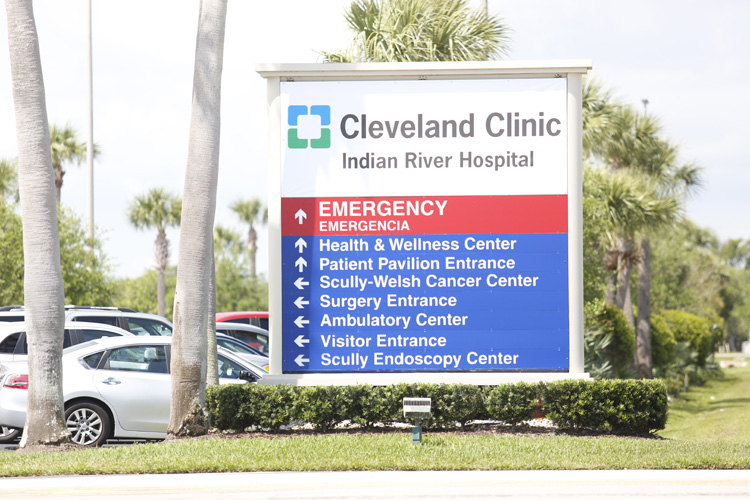
Dr. Greg Rosencrance last week offered an upbeat assessment of the Cleveland Clinic Indian River Hospital’s first half-year under its new ownership that included a 10 percent increase in patient admissions as well as surgeries fueling a $1 million head start over last year’s budget, year to date.
One Indian River County Hospital District trustee called it the best report he’d seen in 20 years.
“People are seeking our care in record numbers,” the CEO told the District Board.
It was the first public report from Cleveland Clinic Indian River. A requirement for semi-annual reporting was included in Cleveland’s lease with the Hospital District.
Along with increased patient volume, there was a substantial decrease in readmissions, from 12.4 percent to 7.8, an important quality metric that will be reflected in safety scores.
Infection rates will be reflected in safety scores, too, and Rosencrance noted those rates are at or below target in two measures, but that the hospital still needs to do better controlling C. difficile, a bacterium that can cause life-threatening colon inflammation. A new handwashing campaign is expected to help rein in that bug.
Last week, too, employees learned they’re getting merit raises for the first time in a decade, though at 2 percent, the raises are lower than the national average of close to 3 percent for mid-to-large companies.
Rosencrance also talked about the first dollars spent of a promised $250 million that will be doled out over the next decade for capital improvements at the hospital. Capital expenditures for 2019 total $21 million for things like exterior painting, new signage and a rooftop chiller for the Behavioral Health Center. Also included are $2.1 million in IT equipment updates and upgrades to prepare for the introduction of a new electronic health record system, Epic, slated for installation in 2020.
The system will connect Indian River to every Cleveland Clinic institution from Stuart to Abu Dhabi, Rosencrance said.
“We’re working on steps to perhaps be able to roll it out earlier on the ambulatory side and share it with all our physician colleagues, but that is a work in progress,” he said.
Other capital expenditures included $1.3 million for improving patient monitoring systems; $1.2 million spent on new imaging equipment; and $402,000 for new ultrasound machines. Operating rooms got $750,000 of upgraded equipment and $600,000 was spent to standardize the hospital’s 37 defibrillators. New labor and delivery beds and stretchers cost another $360,000.
Cleveland Clinic is also spending more than $10 million on the hospital’s new stroke program, a sum that will not be counted against that promised $250 million, Rosencrance said. Construction is expected to get underway any day to carve out a space within the hospital for the center.
Touching on another topic, Rosencrance said the emergency department may be reconfigured after a study is completed in how to improve patient flow.
And in a change that could reduce the number of non-emergency patients in the ER, Cleveland Clinic is increasing access to primary care, with its office on Oslo Road at 43rd Avenue now offering evening and weekend appointments. “We will be following suit at other sites over the course of the rest of the year,” Rosencrance promised.
The Cleveland team has increased coordination between the hospital here and the rest of the Cleveland Clinic Florida hospitals as well as the Cleveland Clinic main campus. That is expected to ease patient transfers when patients need specialized care not offered in Vero.
That capability was tested in March when a patient came to the emergency room with what she thought was bronchitis. Doctors here diagnosed a rare heart condition and transferred the patient to Cleveland Clinic Weston where she underwent a successful heart transplant a few days later.
The hospital’s increase in volume included indigent patients. Rosencrance said charity care costs are up 19 percent overall, with a 45 percent increase in charity psychiatric care, and a 34 percent increase in outpatient care. Under a much more generous financial aid policy, Cleveland Clinic covers all the costs of care for patients earning up to 250 percent of federal poverty guidelines, up from the 150 percent in place under prior management.
That added eligibility accounted for an estimated 60 percent to 70 percent of the increased outlay, with the rest attributed to higher volumes of poor patients.
Indigent costs are still largely covered by taxpayers through the Hospital District, which agreed to reimburse Cleveland Clinic $6 million a year for charity care through June 2021 – 30 months into Cleveland’s tenure. At that point, Cleveland will take over and fund all indigent care.



